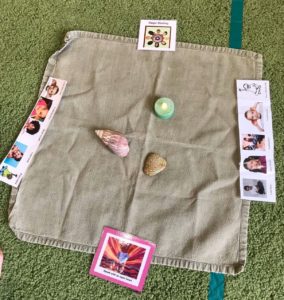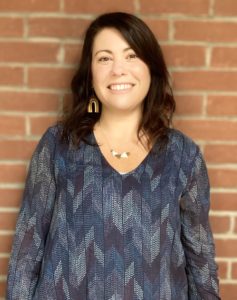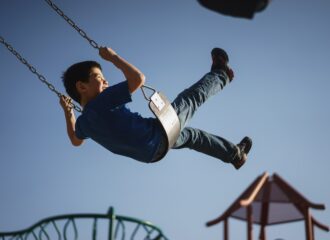
When students feel connected to their schools, peers, and teachers, they build trust and we know that supportive relationships are a key protective factor for young children. The Restorative Practices Framework provides tools for teachers to help foster a sense of connectedness in their classroom through mindful awareness opportunities. Restorative Practice Circles are a place where students safely practice listening, speaking, and practice taking responsibility for their actions. These learning opportunities ultimately build their social emotional skills and lead to emotional literacy. Lisa Bedinger, Director of South Burlington Community Justice Center, had to opportunity to have a with conversation with Stacie Curtis, Director of Early Education with the Burlington School District (BSD) to discuss what Restorative Practices looks like in Early Education Classrooms.
Building Bright Futures invited a guest blog by Lisa Bedinger, Director of South Burlington Community Justice Center as she shares a conversation with Stacie Curtis, Director of Early Education with the Burlington School District (BSD). Restorative Practices are an example of strategies to counter systemic inequities embedded in many of our early childhood systems. Building Bright Futures is committed to identifying inequities in our system and sharing promising practices to create environments where all children thrive.

Lisa Bedinger: What resonated for you about restorative practices at first?
Stacie Curtis: When the BSD started implementing Restorative Practices (RP), I was on the District’s Equity & Diversity Team. I wanted to make sure that Early Ed was represented in the District’s Restorative Practices work too. The inclusive philosophy resonated with me – universal design & access, Circle of Courage, all children, all families – which all align with Early Ed philosophy. Relationship building is natural in what we do – the bonds with teachers, students and parents are keys to success. It aligns with the philosophy of problem-solving and pre-teaching how to deal with conflict.
Relationship building is natural in what we do – the bonds with teachers, students and parents are keys to success.
LB: Are there other ways RP aligns with Early Education?
SC: We follow a social emotional curriculum and focus the first 6 weeks on developing a cohesive classroom/family unit. Restorative Practices aligns with this Second Step social emotional learning (SEL) curriculum and intentional relationship and community building. Different teachers do this in different ways. We talk about feelings as part of this curriculum, in circles, and in restorative conversations.In addition, Restorative Practices work helps to build self-regulation skills among preschoolers, which is so important to teach and instill at an early age and will have lasting effects as they grow older. The self-regulation during Restorative Practice circles may include deep breathing, taking a quiet pause, and listening to others. Another way that Restorative Practices aligns with Early Education is that it gives all students a voice; ensuring that all students can express opinions and feelings is so important for building self-advocacy and confidence in our students.
Restorative Practices…gives all students a voice; ensuring that all students can express opinions and feelings is so important for building self-advocacy and confidence in our students.
LB: How does this work with the pre-K students you work with?
SC: We start with short 5 minute circles and may work up to 10 minute circles by the end of the year. Students might experience 2 or 3 short circles in a day. RP in preschool does not have to be a long in depth circle. Keeping the circles brief helps keep them positive and successful! We did build up as the year went on, but we still kept them short and sweet. It’s almost more about developing a routine around stopping and breathing. One classroom did one Restorative Practice circle a week, which felt manageable for that teacher. This year her goal is to do two a week. RP circles with preschoolers are wiggly! It’s not perfect. It’s optimal to have extra adults to support kids and to model participation and sitting quietly.
We provide a lot of visuals. We have students who don’t speak English yet or who don’t communicate verbally, so we create ways all students can participate. This shows again how the philosophies align. With some students we practice beforehand one-to-one. An example of this is letting them know the question will be, such as “What is your favorite food?” so they can practice or use visuals to communicate beforehand. Then when we have the circle, that student can fully participate.
We also use the Center on the Social Emotional Foundations for Early Learning (CSEFEL) principles, which includes strategies of using the environment as a teacher. We set up the environment in ways that support the children’s independence and learning and reduces challenging behaviors. From there, we’re more able to offer individual support because we’ve done some pre-teaching about it, such as “I take of myself. I take care of my friends. I take care of my things.” This pre-teaching helps prepare them for the expectations they’ll encounter in kindergarten and covers so many situations that arise. Some teachers use the CSEFEL problem-solving cards, which include ideas like setting a timer or picking out a different toy and enable children to make choices themselves.
One teacher explains to students, that “Even though we make mistakes, we are all good people. We are leaning and growing together.” Then she models making mistakes and points out her mistakes to the students. Some of our teachers weren’t sure at first where or how to start. Mindfulness and breathing circles worked for some of them. All of our circles relate to building relationships, such as one classroom would do a weekly a meditation circle with an infuser to bring smell into it. One student would choose the scent for that day. Every student would have a breathing buddy (which was beanie baby or small bean bag). The teacher would go around the circle and place their breathing buddy on their stomach. Soft music is playing while this is happening. They can close their eyes if they want. Then they practice different kinds of breathing by moving their breathing buddy up and down. Some students took of their shoes and the teacher asked them if they wanted a foot squeeze as part of a one-to-one check in and sensory feedback.
 LB: What successes have you had?
LB: What successes have you had?
SC: We use restorative communication to acknowledge staff and children’s feelings. For example, when a student’s tower is knocked over, we acknowledge that the student is frustrated or disappointed and that it’s ok to feel that way. Then we remind them that we’re all still learning and see if the student who knocked it down can find a way to help repair/rebuild the tower.Early on we do circles to learn the skills needed in small steps. Some early circles only involve learning to pass a talking piece to see if we can make it all the way around the circle. This takes practice. We’ve seen success in establishing routines and that students feel more part of the classroom community. We’ve seen a reduction in challenging behaviors. We’ve also seen a difference in our relationships with each other as staff. It’s also helped us celebrate the differences the families all bring instead of making assumptions when we don’t know things.
We’ve seen success in establishing routines and that students feel more part of the classroom community. We’ve seen a reduction in challenging behaviors. We’ve also seen a difference in our relationships with each other as staff. It’s also helped us celebrate the differences the families all bring instead of making assumptions when we don’t know things.
 LB: What challenges have you experienced?
LB: What challenges have you experienced?
SC: Some people didn’t know how to get started, so other teachers piloted things and brought them back to the full group. This helped develop group buy in and consensus for our whole staff. We also made circle kits with sample circle guidelines, a cloth centerpiece, and a painted rock for the talking piece for every teacher to given them materials to help them to get started. Some teachers added their own items to the kit for additional items for the centerpiece or other options for talking pieces. Sometimes we sue a talking pieces that the kids created together.
LB: What would you like other early educators to know?
SC: It’s easier than it sounds. We’re already been trained to do so much of this. It’s helpful when you slow down and make it more intentional and build it slowly over time. Start once a week where you’re comfortable. Our teachers who started once a week now want to do it more often. You can build it into whatever you’re already doing, like yoga or temperature checks.
LB: Why do you think Restorative Practices is important in early education?
SC: Nationally and in VT, we also have disproportionate suspension and expulsion rates in early education for students of color and students on IEPs. We have to teach students the skills they need, so they can be successful and stay in school. We teach students academic skills. We have to slow down and intentionally teach emotional skills and tolerance as well. At this age, they are especially equipped to do that work.
For more information on Burlington School District’s Restorative Practices approach click here: https://www.bsdvt.org/district/diversity-and-equity/restorative-practices/

Lisa Bedinger, Director of South Burlington Community Justice Center

Stacie Curtis, Director of Early Education with the Burlington School District


